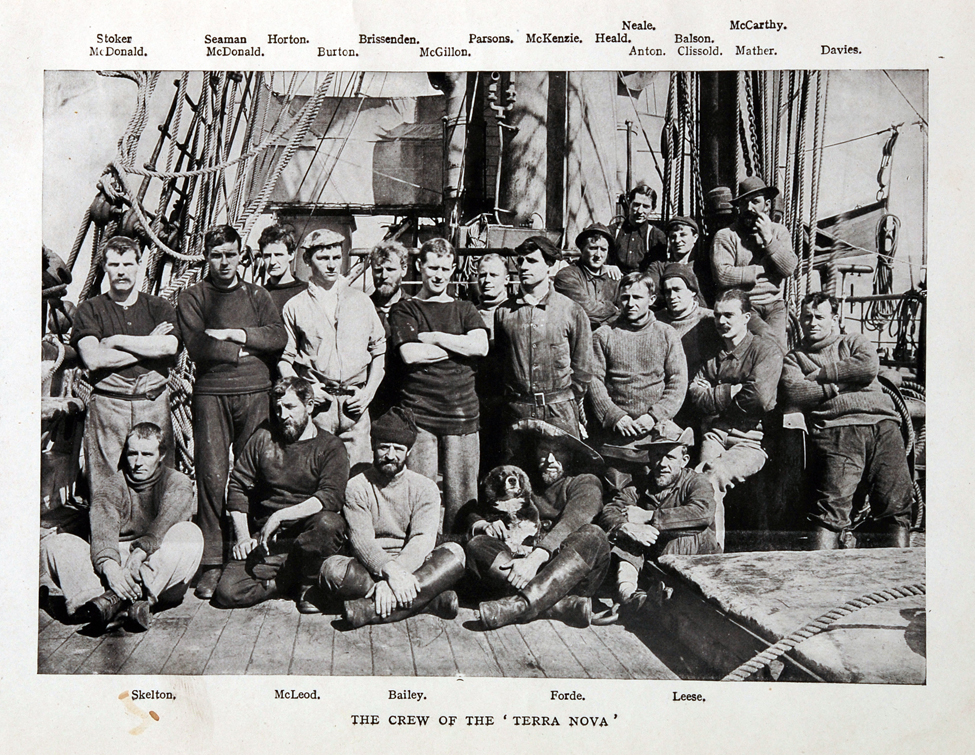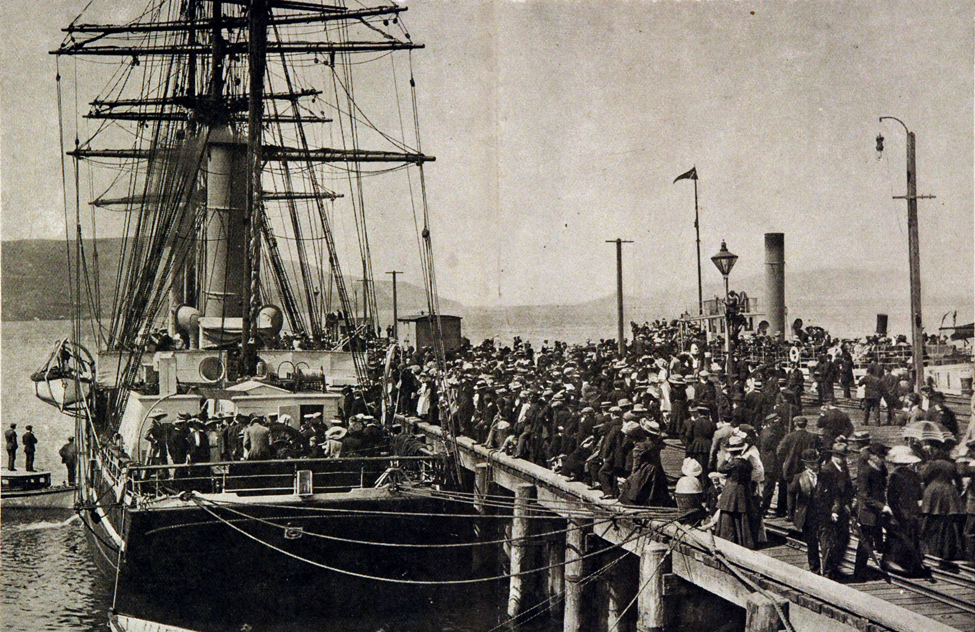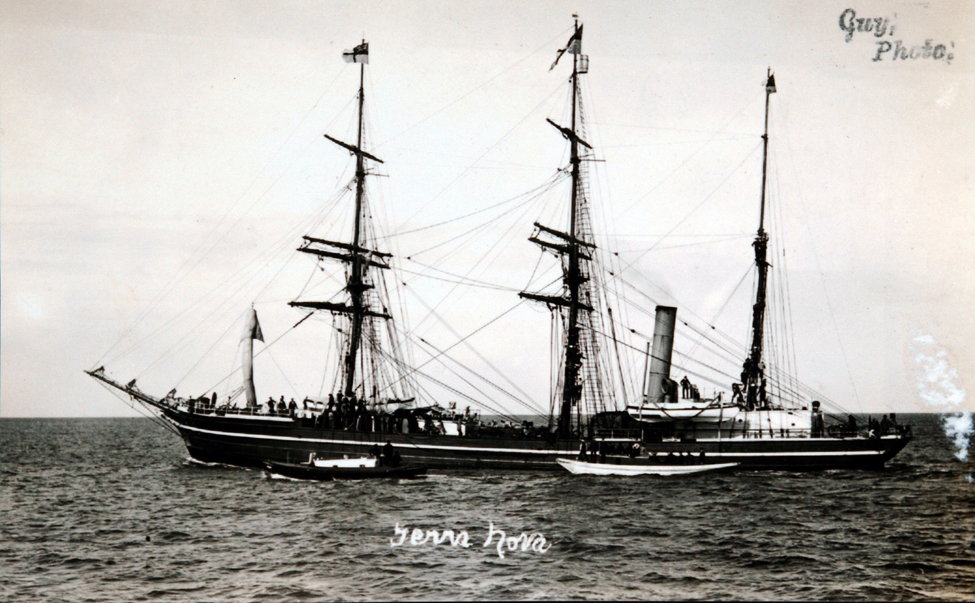
Leonard Huxley (arr.). Scott's Last Expedition. London: Smith, Elder & Co., 1914. Two volumes (bound as one).
Scott returned to New Zealand and the Antarctic in 1910. Though the Terra Nova Expedition was undertaken for scientific research, Scott made it clear in the expedition prospectus that his main objective this time was to be the first man ‘to reach the South Pole, and to secure for the British Empire the honour of this achievement’ (Crane 397–99). John Mill, the mayor of Port Chalmers, again offered coal as an incentive for Scott to use the town’s port. Scott readily accepted.
During the voyage to New Zealand, Scott received word in Melbourne that the Norwegian explorer Roald Amundsen (1872–1928) was also making a bid to be the first person to reach the South Pole. Though both men denied it, the race was on in the eyes of the world.
The Terra Nova arrived in Port Chalmers on 27 November 1910. Scott and Edward Wilson, along with their wives Kathleen and Orianna, arrived the following day by train from Lyttelton. Scott and his officers had a busy day and a half in Dunedin, as they met with dignitaries, arranged for fresh supplies, and were honoured with dinners and even a ball.
David Crane. Scott of the Antarctic: A Life of Courage and Tragedy in the Extreme South. London: HarperCollins, 2005.



